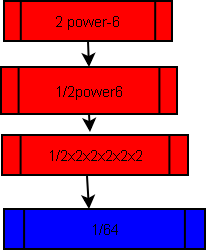LESSON 3: ZERO AND NEGATIVE
Contents
Zero and Negative Indices
Introduction
You have already learnt from the beginning of the topic that an index form is an easy way of writing down numbers.Let us take a look at the example 34.The number 4 is called the index and the number 3 is the base. so 40 also indicates that 0 is the index and 4 is the base. The index which is also called the power or exponent can be positive, negative or zero.
By the end of this lesson you should be able to
|
Lesson Content
Let us now consider the zero index. Here is an example.b5/b5.This as you have already learnt is solved by maintaining the base and subtracting the second index from the first.In this case is b5-5=b0.Also it can be solved as b5/b5=1.Because of these two scenario it is logical to conclude that any number or letter raised to power zero equals one.Now try to find answers to the following:
- 70
- 900
- a0
If you remember well then all the answers will be 1.If you got the right answers then BRAVO you have made a great progress. Let us now take a look at the negative indices.a3/a7.This is the same as a3-7 which is equal to a-4.a-4=1/a4.We can now agree also that any number or letter raised to a negative index can be written as 1 divided by the positive power in question.For instance r-5= 1/r5simplying further 1/r5=1/rxrxrxrxr.Let us now use numbers. 2-6=1/26 1/26=1/2x2x2x2x2x2
=1/64
Illustration.
 Try these without looking at the solutions.
(1/2)-3, y-4
Try these without looking at the solutions.
(1/2)-3, y-4
Let us find out together. 1/2-3=1/(1/2)3
=1/1/8
=1x8/1
=8
y-4 = 1/y4
=1/yxyxyxy
How did it go? Hope you got the answers.